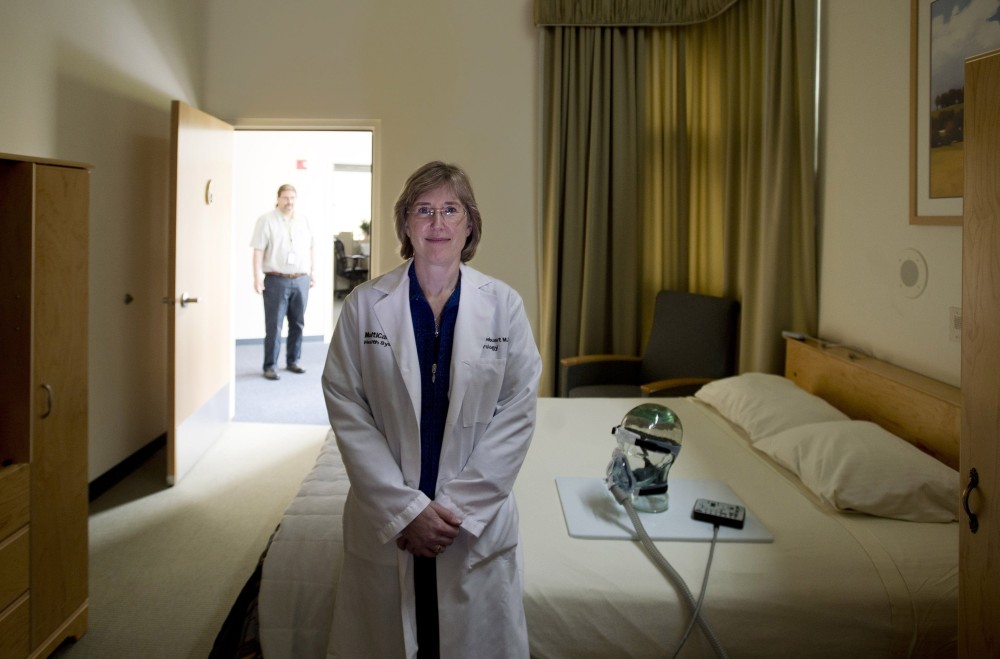By Mike Freeman
The San Diego Union-Tribune
WWR Article Summary (tl;dr) Telemedicine companies that enable physicians to treat patients remotely through video conferencing are gaining acceptance. Instead of making an appointment in advance and sitting in a waiting room, patients can beam out a request to a group of health providers via a website or mobile app. Could this be a good thing for time-strapped women in business? Not sure yet.
SAN DIEGO
Is health care going the way of Uber?
Though it may sound far-fetched, seeing a doctor could move in that direction if telemedicine gains more acceptance, according to health technology experts.
Instead of making an appointment in advance and sitting in a waiting room, patients could beam out a request to a group of health providers via a website or mobile app. The first doctor to respond gets the visit, which is then conducted on a smartphone or computer.
That service, called Ask Me, is available today from Boston-based American Well, one of several telemedicine companies that enable physicians to treat patients remotely through video conferencing.
“When we think about consumers in 2016, what don’t we do online?” said Dr. Peter Antall, chief medical officer of American Well. “We watch movies. We buy airplane tickets. We buy books. The Uberization of heath care, accessing practitioners in an Uber-like manner, it sounds crazy. But it’s actually happening.”
Antall spoke about the changing landscape of consumer health care during the 21st annual Frost & Sullivan Medical Technologies conference in March in San Diego. The event highlighted technology trends that could reshape medicine in coming years. Topics ranged from the promise of telemedicine to medical technology companies tapping common mobile devices/apps for certain medical procedures.
Telemedicine has grabbed headlines recently as American Well, Teladoc, MDLive, Doctor on Demand and other companies have built technology platforms to enable online doctor visits.
These services typically charge about $50 per consultation. The most common ailments for American Well’s online patients include sinus infections, sore throats, flu, bronchitis and urinary tract infections.
“We averaged a wait time over the last three years of three minutes to see a doctor,” Antall said. “There aren’t many places in America where you can see a doctor in three minutes.”
A web of reimbursement rules and hodgepodge regulations continues to present hurdles for telemedicine, however.
Medicare, the nation’s larger insurer, does not pay for telemedicine services for the roughly 80 percent of beneficiaries who live in urban areas, said Gary Capistrant, chief policy officer for the American Telemedicine Association.
Lawmakers have limited reimbursement for telemedicine in part because of concerns that it will increase costs by encouraging seniors to use more services.
Payments from private insurers varies state by state, Capistrant said. Though 29 states mandate that insurance companies cover telehealth visits just as they do in-person appointments, regulations are inconsistent nationwide.
In addition, doctors and hospitals in some states haven’t put the technology in place to deliver telemedicine to their patients, Capistrant said. Some surveys have shown a lack of patient trust in a virtual diagnosis compared with an in-person visit.
“Utilization is very much a patchwork quilt,” Capistrant said. “The reimbursement and coverage is the biggest single barrier to the use of telehealth. We figure about 15 million people have used some sort of telehealth in the past year or so, but the data is not very good.”
Changes in reimbursement policies could spark wider adoption of telemedicine.
For example, Medicare will begin reimbursing health providers for hip and knee replacements under a bundled payment scheme starting in April. Doctors will get one flat payment to cover everything from pre-op evaluation to post-surgery physical therapy. Today, providers are paid for each procedure.
“That is a wonderful change that allows for a tremendous amount of innovation,” said Dr. Joseph Smith, chief executive of the San Diego telemedicine company Reflexion Health. “We are leaving this model of everything having its own Medicare code and its own line-item reimbursement to bundling up. That represents a watershed opportunity for innovators to come in and add value.”
Reflexion Health, which was spun out of the West Health Institute in 2012, makes the federally approved Vera platform for remote physical therapy. It taps Microsoft’s Kinect motion tracking technology to coach hip and knee replacement patients through rehab sessions at home. Physical therapists electronically monitor how patients are doing.
“We are at a point where we have the challenge of unsustainable health care and an aging demographic that is amplifying the issue,” Smith said. “We need ways to give people better access to health care on their own terms.”
Technology companies are betting on health care as a key growth market. San Diego-based Qualcomm is working with drug giant Novartis on a connected inhaler. The company’s wireless technology also is powering a fitness tracker for insurance giant UnitedHealthcare, which gives certain plan members credits of up to $1,460 a year against their deductible for being active.
Philips Healthcare, which makes ultrasound equipment, is tapping into ubiquitous smartphones and tablets to lower upfront equipment costs for hospitals.
Instead of buying a stand-alone ultrasound machine for several thousand dollars, hospitals can get a $199 monthly subscription to Philips’ Lumify. It provides an ultrasound transducer that connects to most Android mobile devices via the micro USB port.
Lumify uses a free app to display ultrasound images on these off-the-shelf smartphones and tablets. The app exports images to the hospital’s electronic medical records system.
“For $199 a month, it doesn’t take a lot of procedures to pay for that device,” said Randy Hamlin, a Philips Healthcare vice president. “It allows smart devices to be used along with a medical piece of hardware in a brand new business model.”














































































































































































































































































































































































